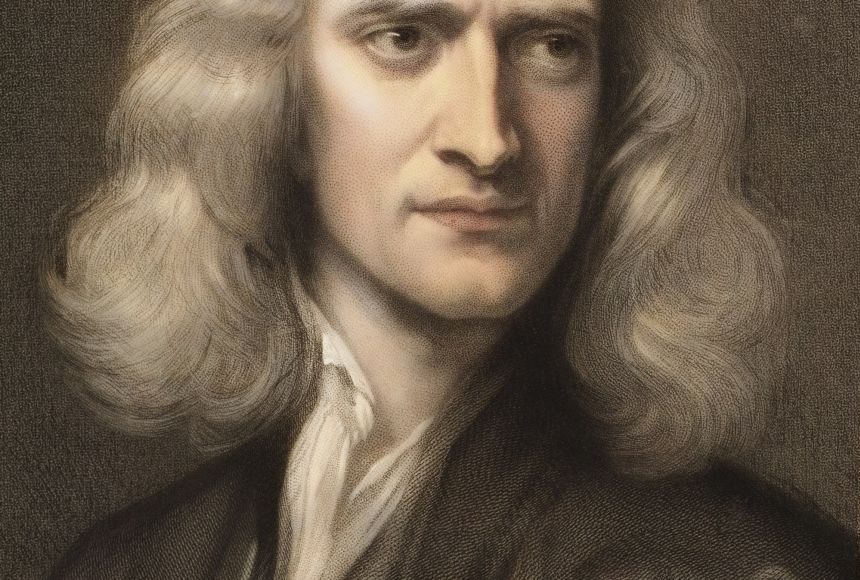Sir Isaac Newton was a tiny man in real life. But he was a giant in the world of science.
Newton created the theory of gravity around 1665 or 1666. He came up with the idea that every physical object, whether it's a person, an apple or a planet, exerts a force on other physical objects. A force is a push or pull in a certain direction. The bigger the body, the stronger the force. There are different types of forces, but this one is called gravitational.
Some say that Newton came up with his ideas about gravity after watching an apple fall. He wondered why the apple fell straight down. Why didn't it fall sideways, or even up toward the sky?
Gravity does not just make apples fall from trees. It also holds us on the ground. Newton showed that gravity even makes the moon circle around Earth, and Earth around the sun, Martin Rees says. He was president of Britain's Royal Society. The Royal Society is the United Kingdom's national academy of science.
Newton's Schooling
Newton was born on January 4, 1643, in Lincolnshire, England. As a kid, he liked building models. He once built a tiny mill. It could grind real flour. It was even powered by a mouse running in a wheel.
In 1661, Newton went to the University of Cambridge. At first, he did not stand out as a student. In 1665, the school closed for a time because of the bubonic plague. This deadly disease killed thousands of people.
Newton went home for two years. This is when he got his apple-falling idea. In 1667, he went back to Cambridge and became a math teacher until 1696.
Newton Changes Science Forever
The theory of gravity was just one of Newton's discoveries. He also loved calculus. This is a mathematical subject that studies rates. A rate is the measurement of how much something changes. Newton's ideas in calculus are still used today.
Newton also studied optics, the science of light. He found out that white light is not just white. It is actually a mix of all the colors of the rainbow. Newton used his knowledge of light to make better telescopes.
Following his apple idea, Newton wrote three laws of motion. These laws changed all of science, and are still used by scientists today.
First Law of Motion: Inertia
An object that sits still will remain still unless a force is applied to it. An object that is moving will keep moving along a straight line unless an outside force is applied to it.
Second Law of Motion: Acceleration
An object will accelerate if force is applied to it.
Acceleration is the change of an object's speed. The acceleration will happen in the same direction as the force.
This idea can also be written as force equals mass times acceleration, or F = ma.
Third Law of Motion: Action and Reaction
For every action there is always an equal and opposite reaction.
Newton's Published Work
Newton published his findings in 1687, in a book called Philosophiae Naturalis Principia Mathematica. Usually people just call it the Principia.
When it came out, not many people read or understood the book, mathematician Robert Wilson says. Still, "everyone knew that it was a great work."
Perceptions of Isaac Newton
Newton made many discoveries, but he wasn't well-liked. As a young man, Newton preferred being alone. When he was older, he was not kind to other scientists. He sometimes tried to ruin their work, Rees says.
When he was older, Newton worked in British government. At one point, he led the British Mint, which is the part of government that makes coins for the country. When someone was caught making fake coins, they were sometimes sentenced to death. Newton thought this was a good thing. He had no mercy, Sir David Wallace says. He was the head of the Isaac Newton Institute in Cambridge, England.
In 1727, at age 84, Sir Isaac Newton died in his sleep. He was buried in Westminster Abbey in London.

